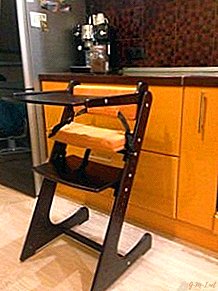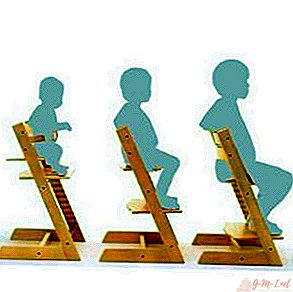 Do it yourself if you have children in the house. It is important to monitor their posture (most problems arise precisely at this age, because the child’s bones are not fully strengthened). A huge number of such designs are sold on the market, but not all of them are suitable for a child. Therefore, it will be easier to buy material, and do all the work yourself, given the age of the child.
Do it yourself if you have children in the house. It is important to monitor their posture (most problems arise precisely at this age, because the child’s bones are not fully strengthened). A huge number of such designs are sold on the market, but not all of them are suitable for a child. Therefore, it will be easier to buy material, and do all the work yourself, given the age of the child.
How to make a growing chair with your own hands
To make such a chair is quite simple if a person has experience in assembling furniture. But if this is the first work, you need to be careful when creating design drawings. It is in this step that an inexperienced person can make a mistake.
Attention! Also important are the choice of material and the procurement of the necessary tools. The whole design will be made according to the size of the child.
Benefits of a Growing Chair
A growing chair (often called the humpbacked horse design) has the following advantages:
- Preserves the child's posture (such chairs are considered orthopedic).
- The possibility of use when the child is six months old.
- Saves the budget. But finished designs are expensive.

Materials and Tools
Not every material is suitable for creating a baby chair. Processed wood or plywood is best suited. When creating a chair, remember that choosing the wrong material will make it heavy and large. This is inappropriate and inconvenient for children. Therefore, it is best to stay on plywood.
To create a chair you need the following tools:
- Paper for creating drawings.
- Pencil for marking.
- Roulette.
- Glue.
- Jigsaw.
- Sandpaper.
- Milling cutter and copy cutter.
- Brush.

Measurements and charts
Work will begin with the creation of drawings. It is necessary to calculate the dimensions of the structural parts, and the angle of their inclination.
To create racks, you need plywood more than 2 cm. According to calculations, there are 2 blanks for each plywood (then they will be glued together). The main parts of the chair (seat and back) are created from plywood 1.5 or 2 cm.
Attention! The size of the back depends on the size of the back of a person (shoulders should be included here). Same with the armrests and seat. But perhaps the person wants the back to be at the level of the head or neck. Then the calculations are done according to the wishes.
Growing a chair yourself: step by step instructions
You can start work:
- The piece made according to the drawings needs to be attached to the plywood. Cut the first detail of the side legs. Harvesting is done with a margin of several millimeters. Thanks to this stock, we will not have problems when cutting.
- Using a copy mill, the workpiece must be brought to a predetermined size.
- Cut 3 legs.
- Fold all 4 legs in a pile.
- We grind all the legs.
- Now you need to glue the workpieces. We wait until the glue dries.
- Using the milling cutter, we create grooves on the inside of the legs. The depth of one groove is 1 cm and the width is 2.5 cm. The grooves are important to adjust the position of the elements.
- Through holes are made in the middle of the grooves. They are needed to secure the footrest and seat. The distances between the holes should be the same. To avoid curvature of the outside, you need to put a wooden block under the leg, during the drilling process.
- It is necessary to make runners. They are needed to lock the seat in the correct position. You need to make 4 runners (2 on each side). The size is the size of the legs.
- We round the corners and edges of the slider. We make a gutter in the center. It is needed to glue the rails into it, which are inserted into the grooves of the legs.
- The size of the rails depends on the width of the gutter. They are inserted into the groove on one side, and in the grooves on the other.
- It is necessary to glue the slats and runners. We wait until the glue dries.
- We make holes in the runners. They fix the given position.
- Now you can cut the back and stand. Dimensions depend on the person who will sit on the chair.
- Now cut the back.
- Also need a transverse tab. She fixes her legs.
- We collect all the details according to the healing principle, instead of the final method. This will allow you to discount the results, and eliminate problems that may appear during the assembly process.
- If the design turned out according to your expectations, you can begin the final processing. To start, we clean the surface with sandpaper.
- We can start painting the chair. Choose a color. Some people do not paint the chair, but use a primer, varnishing it. This will preserve the natural wood color. But if plywood was used, it is better to paint it, because the external pattern is heterogeneous.
- We wait until the paint dries.
- We assemble all the details in a single design.

You can install additional parts, such as armrests. It all depends on the operation of the chair. For example, there is no need for armrests if the chair is used by the student in the process of writing homework (hands will always be on the table).




Leave Your Comment